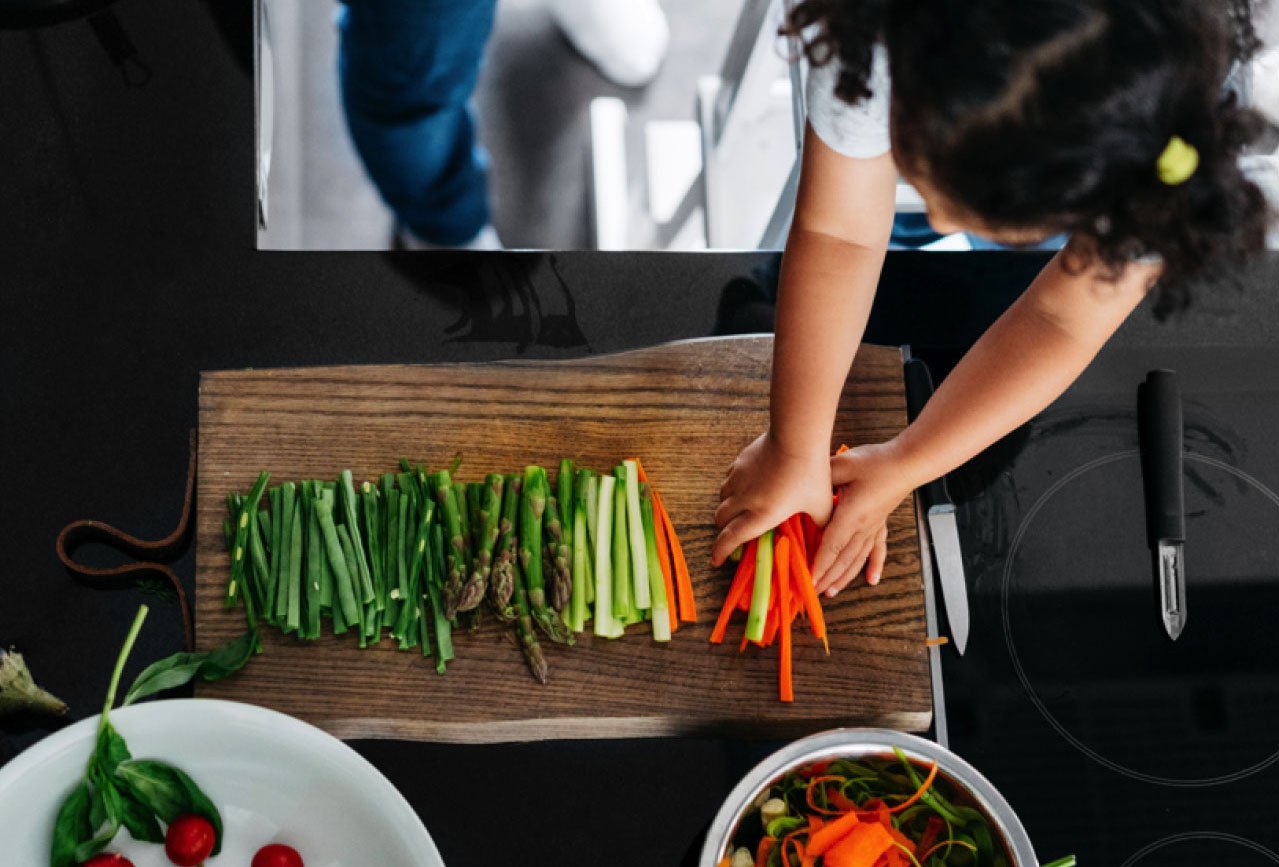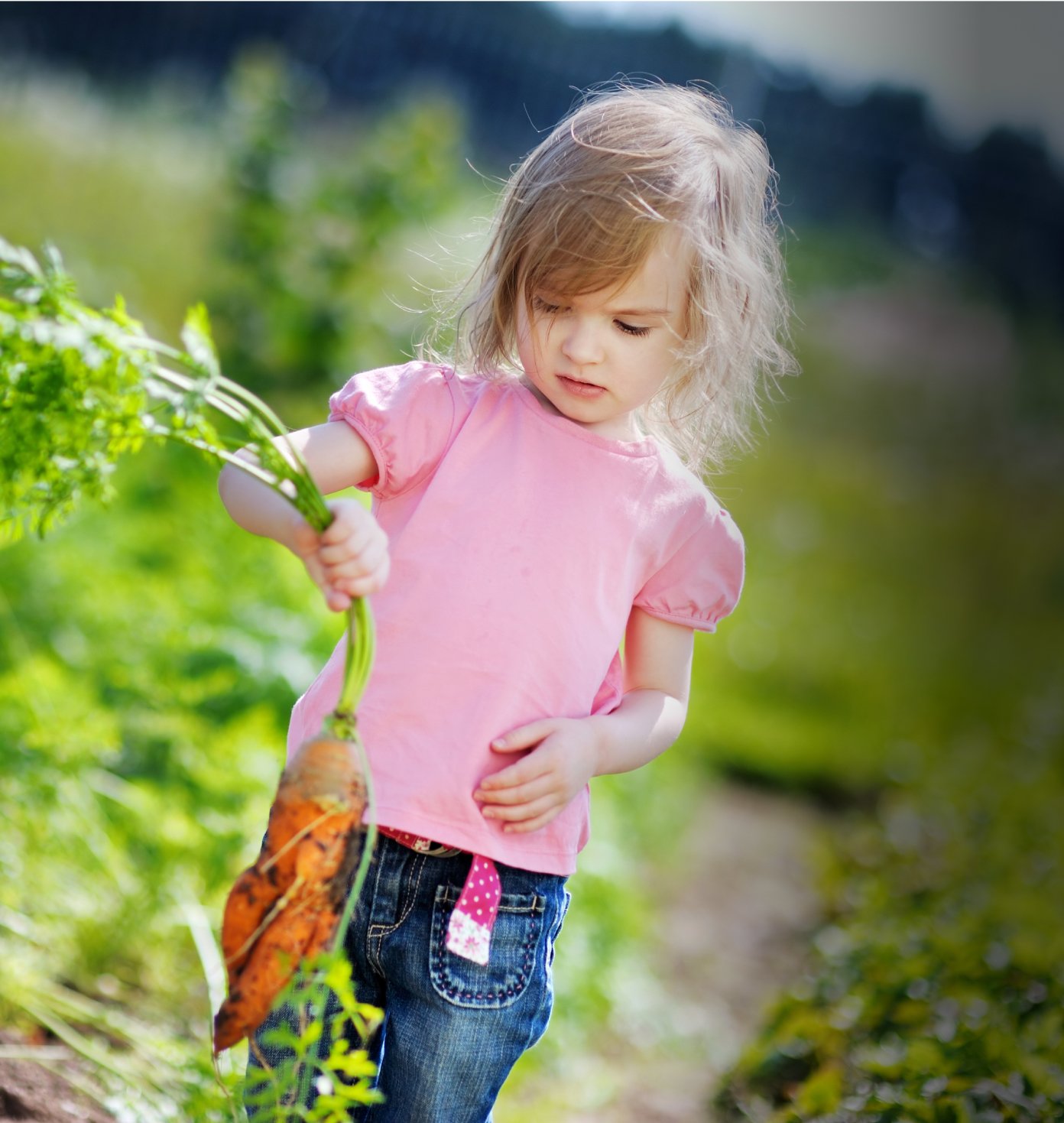EWG analysis of USDA data: Some non-organic baby foods less pesticide-contaminated than fresh produce
WEDNESDAY, MARCH 20, 2024
Key findings
- For the first time in 10 years, the Department of Agriculture released results from its baby food collection and testing program.
- The first round of data suggests the amount of pesticides on baby food has dropped since EWG’s landmark 1995 study.
- Pesticide concentrations on some types of non-organic baby food are much lower than on the corresponding non-organic fresh fruits and vegetables.
Non-organic baby foods are considerably less contaminated by pesticides than their whole fruit and vegetable counterparts, a new EWG analysis of Department of Agriculture tests shows. These are the first tests of pesticides in baby food by the USDA in over a decade.
Nearly half the samples of baby food collected in 2022 and made from non-organic sweet potatoes, green beans, peaches and pears had residues of pesticides, the USDA tests found. But the number and concentrations of pesticides were much lower in baby food than on non-organic fresh fruits and vegetables, suggesting that baby food manufacturers and suppliers may be taking extra steps to reduce pesticides in baby food.
The USDA tested 612 samples of non-organic baby food made from sweet potatoes, green beans, peaches and pears collected between October and December 2022. Collectively, 49 percent of the samples, or 297 out of 612, contained pesticide residues. The data was released to the public in January 2024.
This is just the first round of results from a series of tests that will be conducted between 2022 and 2024. In 2025, the USDA will release results from more tests of sweet potatoes, green beans, peaches and pears, as well as new tests of applesauce, carrots and peas.
Results from the USDA’s first round of baby food tests
For its tests, the USDA collected 16-ounce samples of first-stage food for babies aged 4-6 months and second-stage food for babies aged 6-9 months. The baby food was made from purees of four food types: sweet potatoes, green beans, peaches and pears.
Each type of baby food was made from only one primary ingredient, though the agency noted each may have also contained juice concentrates and other added nutrients.
In all cases, non-organic baby foods had fewer pesticides than their fresh counterparts:
- Sweet potatoes: About 58 percent of conventional whole sweet potatoes had detectable pesticide residues – 17 pesticides total. Non-organic sweet potato baby food was much cleaner, with just 15 percent containing a detectable pesticide residue – all from a fungicide called azoxystrobin. Sweet potatoes are frequently on our Clean Fifteen™, the Shopper’s Guide list of non-organic, or conventional, produce least contaminated with pesticides.
- Green beans: Conventional whole green beans contained 94 different pesticides – including the neurotoxic organophosphate insecticide acephate. But non-organic baby food made from green beans had residues from just three pesticides, none of which was acephate. Green beans are twelfth on EWG’s 2024 Dirty Dozen™ – our Shopper’s Guide list of the conventional produce most contaminated with pesticides.
- Peaches: Nearly 100 percent of conventional fresh peaches had detectable residues of 59 pesticides. But 44 percent of non-organic baby food made from peaches contained a total of 18 pesticides. Peaches are fifth on the 2024 Dirty Dozen.
- Pears: Although non-organic pear-based baby food was the most pesticide-riddled of all the foods the USDA tested, it was still less contaminated than conventional fresh pears. Still, the results aren’t entirely reassuring:
- Almost all fresh pear and pear-based baby food samples had pesticide residues – 95 percent of whole pear samples and more than 98 percent of baby food, or 128 out of 130 samples.
- There were two or more pesticides in 89 percent of fresh pears and in 82 percent of pear-based baby foods.
- While more than 60 percent of fresh conventional pears had traces of five or more pesticides, this was true for just 20 percent of pear-based baby foods.
- A total of 64 different pesticides were found on whole pears, compared to 24 in pear-based baby foods.
The average concentration of pesticide residues in baby food was also lower, across the board, than their fresh produce analogs.
It’s not clear why baby foods contain, overall, fewer pesticides than fresh fruits and vegetables – at least according to the test results the USDA has released so far. It could be because of how baby food is processed. But it also seems likely that manufacturers intentionally limit the amount of pesticides used on crops grown to make baby food specifically.
Compared to tests of baby food EWG conducted in 1995 and government tests from 2013, the most toxic pesticides are gone from baby food, and concentrations of other pesticides continue to drop.
The USDA’s new test results are largely consistent with the residues in 38 percent of products EWG tested in 2023. (The higher detections in the USDA data could be due to more sensitive testing methods, which can pick up lower concentrations of the contaminants.)
Particularly problematic pesticides
Some of the most toxic pesticides – like organophosphate insecticides such as chlorpyrifos, acephate, azinphos-methyl and methamidophos – were not found in the most recent USDA tests of baby food.
But more work must be done to further reduce babies’ exposure to pesticides. Some of the pesticides most frequently found in baby food have been linked to concerning health problems.
Several of the residues found in baby food were from pesticides that are not approved for use in the European Union due to their health concerns:
- Bifenthrin, a suspected carcinogen, found mostly on green beans;
- Diflubenzuron, which has been linked to DNA damage, found mostly on pears; and
- Propiconazole, a reproductive toxicant with possible endocrine-disrupting effects, found mostly on peaches.
Furthemore, in the EU, all pesticide residues in baby food must be lower than 10 parts per billion, or ppb. That limit was surpassed by 21 percent of the baby foods sampled in the USDA’s latest round of tests. (The USDA’s 2013 tests found pesticides above 10 ppb on 30 to 40 percent of some baby foods.)
Organic baby foods even less contaminated
Almost all of the baby foods the USDA tested were conventional: 612 out of 698. Although the agency did test organic samples for each type of baby food, it only tested enough of two of them – pears and sweet potatoes – to allow for meaningful comparison with conventional samples.
A total of 86 samples were taken from organic baby foods, with 47 pear-based and 33 sweet potato–based. For both types of baby food, the organic samples had, on average, both lower detection frequencies and concentrations of pesticides than conventional samples.
Although nearly 50 percent of organic pear-based baby foods did have detectable pesticide residues, their concentrations were nine times lower than in the conventional baby foods.
And just 3 percent of organic sweet potato–based baby food samples had any pesticide residues, compared to 15 percent of conventional sweet potato baby food samples.
It’s not clear why the organic pear baby foods had these pesticides in them at all. The contamination may come from the field, through drift from pesticide spraying on nearby conventional orchards or from cross-contamination during processing.
Still, all of the residues were low enough to pass legal muster.
What’s next for the USDA’s baby food tests
More USDA baby food test data will become available next year. We expect that data to include results from samples collected in 2023 of more baby foods made from sweet potatoes, green beans, peaches and pears, as well as applesauce, carrots and peas.
The USDA will complete all baby food collection and testing by the end of 2024, and likely release the final results in 2025.
Recommendations for parents and other caregivers
When caregivers buy baby food, or make it at home, we recommend they follow EWG’s Dirty Dozen and Clean Fifteen lists. Products made with only or primarily Dirty Dozen fruits and vegetables can be bought organic to reduce pesticide exposure. Products made up of only or primarily Clean Fifteen items can be bought as conventional or organic versions, with low risk of pesticide exposure either way.
Although green bean– and peach–based baby foods have fewer pesticides than their whole counterparts, you’re still better off buying organic versions to ensure the food has the lowest possible residues of pesticide.
As of now, there is not enough data about other baby foods. For those fruits and vegetables, we also recommend choosing organic, if available and within your budget.
Other recommendations:
- Try to avoid baby food pouches, which can potentially leach harmful chemicals into food, and choose glass jars instead.
- Keep track of food recalls by the Food and Drug Administration.
About EWG’s Shopper’s Guide to Pesticides in Produce
EWG's Shopper’s Guide to Pesticides in Produce is a suite of materials investigating the presence of pesticides in foods and the ways they could harm people, especially children – and to help consumers make the best, most informed choices for their families.
We’ve published the guide nearly every year since 2004.
EWG's Shopper’s Guide is designed to support people who would like to minimize their exposure to pesticides. It includes two well-known lists: the Dirty Dozen, or the 12 fresh non-organic, or conventional, fruits and vegetables with the highest pesticide residues, as well as the Clean Fifteen, the conventionally grown fruits and vegetables with very low or no traces of pesticides.
Some pesticides have more data linking them to health concerns than others. These pesticides are particularly concerning for children, who are especially susceptible to many of the health harms associated with pesticide exposure.
The presence of so many different pesticides in foods is also problematic. There’s little data available about how multiple pesticides interact with each other in the body or how such mixtures could compound each chemical’s individual potential health harms. But the data we do have suggests that when chemicals are present in a mixture, they may be toxic to humans at lower levels than when alone.
When regulating pesticides, government bodies also consider them only one at a time. They don’t look at the potential total body burden for consumers.











